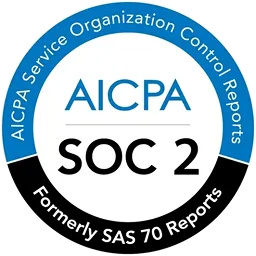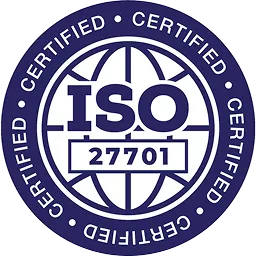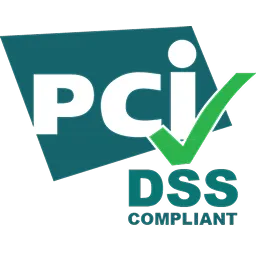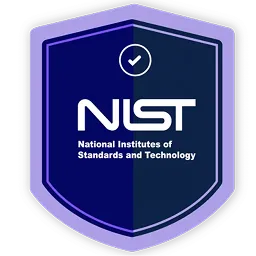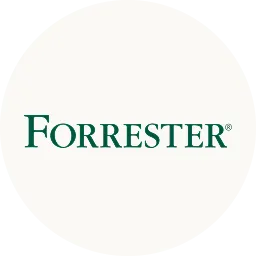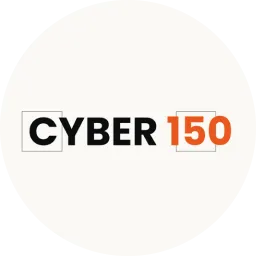The rise of user-friendly SaaS applications has brought convenience and efficiency but has also led to a significant financial challenge: SaaS overspending. To address this issue and navigate the complex world of SaaS management and optimization, finance managers and their teams must embark on a journey with distinct phases, each requiring careful attention and strategic business decision-making.
Let's explore these phases and how Zluri's innovative capabilities reshape the pursuit of responsible and cost-effective SaaS cost optimization.
Have you ever wondered why managing software these days feels so complicated? It's a question many organizations are grappling with as they navigate the vast world of SaaS. To put things into perspective, consider that in 1999, most companies used just one SaaS application.
Fast forward to today, and more than 240,000 such applications are available. It's a massive shift in how businesses operate, and by 2027, it's predicted that most companies will rely entirely on SaaS.

In the past, installing software meant dealing with CDs and complex setups. It involved dedicated teams handling licenses, installations, and access. Nowadays, adopting SaaS applications is incredibly convenient. Why? Several factors make it a breeze:
- Abundance of Free Trials: Companies often offer generous free trials, enticing users to test their products with minimal commitment.
- Streamlined Sign-Up: Signing up for a SaaS application typically requires basic information and credit card details, setting the stage for easy future transactions.
- Rapid Deployment: SaaS applications boast almost no setup time, enabling users to start benefiting from them almost immediately.
- Diverse Options: The SaaS market offers a multitude of choices for every conceivable category, catering to diverse needs.
This convenience led to a rush of adoptions, renewals, and software subscriptions, often without a clear understanding of the costs involved. In essence, many companies found themselves in the dark, unintentionally overspending on SaaS.
[Exclusive] The State of SaaS Management 2024 report, download now!
The SaaS Overspending Issue
The proliferation of SaaS solutions has given rise to a pressing financial concern that affects organizations of all sizes: SaaS overspending. This issue stems from the accessibility of SaaS procurement and the prevalence of subscription-based pricing models, leading to excessive or redundant subscriptions. Finance managers must address this challenge to safeguard financial resources and prevent unnecessary waste.
SaaS overspending has emerged as a significant financial hurdle for organizations of all sizes. The ease of SaaS procurement and the subscription-based pricing model often leads to overuse or unused subscriptions. Finance managers must address this challenge to prevent financial waste.
Unchecked SaaS overspending can have dire financial consequences for a company. It can strain budgets, reduce profitability, and hinder growth opportunities. Finance managers must recognize the broader financial implications and take proactive measures to mitigate these risks.
The root causes of SaaS overspending can be distilled into three primary issues:
- No Visibility: A staggering 70% of applications within organizations remain unknown to IT departments, making it impossible to manage what isn't visible.
- Dark Billing: Auto-renewals and ongoing subscriptions often slip under the radar, accumulating unnecessary expenses.
- Data Silos: Financial and application data are often scattered and disconnected, hindering efforts to gain a holistic view of SaaS expenditure.
If your company has encountered or observed these recurring patterns, you're likely aware that the problem goes beyond simply establishing internal processes and approval workflows. Attempting to tackle these issues without a proper tool or system can impede productivity and result in a subpar employee experience.
In such a scenario, it becomes imperative to closely examine the four key elements of your SaaS ecosystem—applications, users, expenditures, and processes—and ask two fundamental questions:
- What aspects of our SaaS landscape do we have control over?
- Where does all the data generated by these elements converge, and how can we effectively manage it to regain control over our SaaS expenditure?By addressing these questions and implementing solutions tailored to your organization's unique needs, you can embark on a journey toward more responsible and SaaS cost optimization, ensuring your resources are used judiciously in these fast-evolving times.
Understanding SaaS Lifecycle Stages & Their Impact
Without proper governance and oversight, the SaaS ecosystem can quickly descend into chaos, resulting in disconnected processes and spiraling costs. Let's delve into each phase of interaction within the SaaS lifecycle to understand the challenges it presents and its impact on organizations.

Applications: Shedding Light on the Shadows
A lack of visibility into the applications being used within the SaaS ecosystem can lead to several issues. These include:
- Hidden High-Risk Apps: Unbeknownst to organizations, high-risk applications can operate within the shadows, potentially posing security and compliance risks.
- Duplication: Without proper oversight, multiple teams may unknowingly adopt similar applications for similar purposes, leading to redundancy and wasted resources.
- Functional Redundancy: In some cases, different teams may use distinct project management or collaboration apps when a single, unified solution would suffice.
Users: Balancing Freedom and Control
The empowerment of users to select and use SaaS applications can yield benefits in terms of productivity and efficiency. However, it also introduces risks:
- Shadow IT: When users have unrestricted freedom to adopt SaaS applications, shadow IT can emerge. This means unauthorized apps enter the system, often without proper security measures in place.
- Unauthorized Access: Lack of usage restrictions can result in unauthorized access to critical systems and data, potentially compromising security.
- High-Risk Applications: Users may unwittingly introduce high-risk applications into the organization, creating vulnerabilities.
Spends: The Cost Conundrum
SaaS cost optimization can be challenging due to several factors:
- Corporate Credit Cards: The simplicity of SaaS payments, often tied to corporate credit cards, can make tracking expenses and budgeting a formidable task.
- Unused Licenses: It's not uncommon for organizations to discover that a substantial portion of purchased licenses go unused, representing wasted resources.
- Overshooting Costs: Pricing plans may exceed the actual needs of users, leading to escalating costs. This can occur when a free trial unexpectedly converts into a costly yearly subscription without adequate oversight.
Processes: Streamlining Operations
The overarching processes that govern how apps, users, and spends are managed within the SaaS ecosystem can either facilitate efficiency or hinder progress:
- Inefficient Processes: Many organizations have lengthy, inefficient processes for license procurement and renewals. These are often last-minute and reactive decisions, leaving vendors with the upper hand during negotiations and causing companies to overpay.
- Lack of Process: In some cases, processes may be nonexistent, leaving organizations vulnerable to ad-hoc decisions and lacking strategic oversight.
- Ineffective Governance: Without proper governance, the SaaS ecosystem can operate without accountability, leading to financial waste.
All these siloed interactions create a compounding effect, resulting in spiraling costs throughout the entire SaaS lifecycle. Organizations may find themselves grappling with budget overruns, inefficiencies, and security risks.

SaaS management has unquestionably risen to prominence. However, it's imperative to recognize that SaaS management, while crucial, might fall short of fully harnessing the potential of your SaaS ecosystem. Here's why:
- A One-Dimensional Approach: SaaS management, as the name suggests, often focuses primarily on addressing the immediate challenges at hand. It tends to operate within a one-dimensional framework, tackling today's problems without a holistic, forward-looking perspective.
- Limited Benefits: While SaaS management undoubtedly offers benefits in terms of visibility, control, and compliance, its impact can be constrained. Its scope may not extend to realizing the full spectrum of possibilities for optimizing your SaaS landscape.
- Underutilized Data: In many cases, SaaS management tools may underutilize the vast reservoir of data at their disposal. They may fall short in harnessing this data to unlock deeper insights, identify opportunities for cost savings, and drive strategic decision-making.
Given these considerations, it becomes imperative to differentiate between platforms that solely manage SaaS and those that propel your organization toward cost optimization. The distinction lies in managing the present and preparing for a future where your SaaS ecosystem operates at peak efficiency and delivers sustained value.
SaaS Management vs. SaaS Optimization
While both SaaS management and SaaS optimization play pivotal roles in the SaaS ecosystem, their objectives and outcomes differ significantly. Let's explore these distinctions:
The Roadmap to SaaS Optimization: Navigating Towards Efficiency
Achieving SaaS optimization is akin to embarking on a journey to construct an unending cycle of perpetual improvement across all facets of your SaaS ecosystem. This journey involves incremental steps, establishing robust processes, and adhering to protocols that consolidate each advancement.

The ultimate destination on this roadmap is the optimization cycle, a stage where your entire SaaS ecosystem operates effortlessly, almost as if on auto-pilot. At this juncture, each new application, user, license, or process introduced is seamlessly integrated and optimized within the existing cycle.
The result? Continuous and automatic attainment of cost efficiencies across business units, all without requiring manual intervention.
Amid this quest for optimization, Zluri emerges as a game-changer, offering a holistic solution to address the multifaceted challenges of SaaS management and optimization.
Zluri’s Approach to Multi-dimensional Optimization
Zluri is a cutting-edge platform meticulously engineered to revolutionize how organizations navigate their SaaS ecosystems. With its comprehensive suite of functionalities, Zluri empowers businesses to streamline their SaaS operations, reduce costs, and unlock the full potential of their digital resources.
Let's explore the core functionalities that make Zluri an indispensable SaaS management software for organizations striving for excellence in SaaS management and optimization:
Zluri first helps control each phase of interaction in the SaaS ecosystem and then optimizes all phases in multiple ways by cutting unnecessary costs & tightening up processes.
Stage Zero: Discovery & Mapping
The first step is discovering applications and users and corresponding transactions, licenses, contracts, and subscriptions associated with those apps and users. This is done by integrating with apps and financial systems, uploading scattered information, and mapping all of this within the Zluri platform.
With a vast app library, currently boasting over 240,000 applications and continually expanding, Zluri offers unparalleled coverage.
To achieve this, Zluri uses 9 discovery methods to gain complete visibility into your organization's SaaS landscape. These methods include browser agents, IDPs & SSO, direct integrations, desktop agents, active directories, HRMS platforms, MDM platforms, finance systems, and CASB platforms. This empowers your team to identify and manage SaaS applications effectively.

- Zluri’s nine discovery methods
Phase 1: Rightsizing your SaaS stack
In Phase 1, our primary objective is to optimize your application usage for greater efficiency and security. Here's how Zluri helps you achieve this goal:
- Eliminating Duplication and Redundancy
One of the first steps in optimizing your SaaS stack is identifying and eliminating duplicate or redundant applications and instances. Zluri streamlines this process, making it easy to take decisive actions. By reducing redundancy, you save on costs and improve your organization's overall productivity. - Identifying High-Risk and Unauthorized Apps
Security is paramount, and Zluri is equipped to identify high-risk and unauthorized applications in your SaaS ecosystem. Our technology scans your environment, flagging potentially dangerous apps. This proactive approach helps you maintain a secure environment and prevents costly security breaches. - Discovering Identical Functionality Across Teams
Different teams within your organization may often use separate applications with identical functionality. Zluri's workflow is designed to identify such instances, allowing you to consolidate resources and streamline your software stack. This not only reduces costs, but also promotes better collaboration among teams. - Mitigating the Risk of Security Breaches
Understanding the risks associated with various applications is crucial. Zluri provides insights into high-risk apps that could potentially lead to expensive security breaches and data leaks. With this information at your fingertips, you can take proactive measures to mitigate these risks and enhance your organization's overall security posture.

Phase 2: Essentializing usage & establishing control
After crafting an optimal SaaS stack, Phase 2 focuses on fine-tuning your usage and ensuring control over your digital environment. Here's how Zluri can assist you in this phase:
- Usage OptimizationTo maximize efficiency and minimize costs, it's essential to optimize your software usage. Zluri provides you with the tools and insights needed to identify underutilized or redundant software licenses across departments. By optimizing usage, you can make the most of your SaaS investments and reduce unnecessary expenditures.
- Access Control ImplementationSecurity and compliance are paramount in today's digital landscape. Zluri helps you establish robust access control measures to safeguard sensitive data and ensures that only authorized personnel have access to specific applications and resources. This proactive approach reduces the risk of unauthorized access and potential data breaches, eventually negating shadow IT.
- Monitoring and Action on User ActivityUnderstanding how users interact with your software stack is vital for maintaining security and efficiency. Zluri's monitoring capabilities enable you to track user activity comprehensively. If any suspicious or non-compliant behavior is detected, you can take immediate action to mitigate potential risks. This real-time monitoring enhances your organization's security posture and ensures optimal software utilization.

Phase 3: Optimizing cost & forecasting software spending
Within Phase 3, Zluri leverages its robust mapping technology to seamlessly connect every transaction with its corresponding application, facilitating profound insights that translate into significant cost savings for your organization.
- Cost Optimization: Harness the power of combining application usage data with in-depth license information, including plans, pricing, and contract values. By integrating budget management into your spending vs. cost planning, you can meticulously trim unnecessary expenses, ensuring a leaner budget.
- License Utilization: Bid farewell to underused application licenses and contracts that clutter your system. Zluri empowers you to eliminate inefficient license distribution across users and business teams, optimizing your resources for enhanced productivity.
- Expenditure Projections: Zluri enables you to build comprehensive expenditure forecasts based on existing app usage and software spending patterns. You maintain financial prudence by identifying potential leaks and proactively preventing future overspending.
- Timely Management: Take precise control of your license management landscape. Zluri provides detailed timelines for contracts, auto-renewal reminders, and more, eliminating the obscurity of dark SaaS billing and ensuring you never miss a crucial deadline.

Phase 4: Streamlining SaaSOps
Bringing repetition and predictability across all SaaS apps, SaaS spending, and users can be achieved through optimal workflows that help streamline all processes involving the different phases of the SaaS lifecycle.
Zluri allows teams to design workflows that fit custom processes and then augment them with no-code automation, which can be executed within a few clicks. Over 1000+ automated actions are available to choose from that help build your no-code flows with minimum effort.
Here's a breakdown of the key elements:
- Onboarding Automation: Zluri offers a solution to effortlessly automate the onboarding process, tailored precisely to your organization's unique requirements.
These personalized workflows can be saved as playbooks for future use, ensuring consistent and efficient onboarding across different departments and roles. By scheduling tasks in advance, Zluri minimizes last-minute hassles, creating a seamless and stress-free onboarding experience. - Offboarding Automation: Zluri ensures a secure and automated offboarding process when employees leave your organization. Access to devices, applications, and systems is revoked systematically to prevent unauthorized access to sensitive data. Employee data is securely backed up and transferred to a new owner, preserving essential information.
Licenses are revoked, and Single Sign-On (SSO) access is removed, preventing former employees from using organization applications. Zluri simplifies and streamlines the offboarding process, safeguarding your data and saving valuable time. - Requisition & App Store: Zluri introduces an Employee App Store, empowering employees to make informed decisions about their needed applications. Employees can choose the tools that enhance their productivity by decentralizing SaaS procurement decisions.
Real-time updates and transparent communication facilitate an efficient approval process. Additionally, IT teams or administrators can establish automated approval workflows for each application or category, granting access to employees automatically when predefined conditions are met. - Recommendation Engine: Zluri's Recommendation Engine adds an intelligent dimension to your SaaSOps. It goes beyond workflow creation, offering contextual app recommendations based on an employee's department and role. This feature simplifies decision-making for approvers, administrators, and requesters by suggesting relevant applications and automation actions.

Phase 5: Premeditated buying & renewal
In the fifth phase of your journey, you'll bridge the gap between your internal cost optimization processes and the external buying and renewal cycle of SaaS. This crucial connection ensures that impulsive buying decisions, protracted negotiations, and last-minute renewals no longer disrupt your hard-won efficiency gains.
Zluri has introduced a cutting-edge SaaS buying service that complements its existing platform, aiming to transform your SaaS procurement process and renewal practices:
1. Comprehensive SaaS Buying Platform: Zluri simplifies the SaaS buying process by providing a comprehensive platform. It facilitates acquiring new tools and efficiently managing existing renewals, all supported by data-backed negotiation strategies.
2. Complete SaaS Stack Control: Zluri provides complete control over your SaaS stack, minimizing financial, compliance, and security risks associated with SaaS applications. It enhances cost control, saves time, nurtures vendor relationships, and strengthens your security and compliance posture.
3. Real-Time Purchase Data: Zluri offers real-time insights into your purchase history, enabling you to plan SaaS acquisitions for the upcoming 12 months. It enhances your understanding of the SaaS purchasing process and renewals for the year, promoting informed decisions.
4. Renewal Insights and Visibility: Zluri's Renewal Calendar provides insights and complete visibility into all upcoming SaaS renewals. It sends notifications for renewal dates and offers insights on optimizing license sizes, if necessary. Custom alerts can be set to prioritize high-value contracts, ensuring proactive management.
5. Efficient Contract Management: Zluri simplifies the management of software application contracts and renewals, including the creation of approval processes to SaaS cost reduction. It provides data for the negotiation process and ROI maximization, monitors software spend, eliminates shadow IT, and offers deeper insights for SaaS cost optimization strategies.
6. Usage Monitoring for SaaS Cost Optimization: With Zluri's usage monitoring feature, you gain insights into application efficiency, enabling you to optimize licensing costs strategically. It supports data-driven decisions to improve license ROI.
7. Vendor Management: Zluri streamlines vendor management by offering a complete list of vendors and their associated contracts. It provides clarity on SaaS vendors, stores vendor contracts contextually, offers real-time notifications, insights on renewals, and detailed reports. This information empowers you to negotiate better deals and effectively manage your vendors.
8. License Optimization: Zluri enhances visibility into all licenses, subscriptions, contracts, and perpetual agreements. This visibility allows you to gather information on unused licenses, abandoned apps, rightsize underutilized licenses, or downgrade to more suitable pricing models.
9. Contract Centralization: All your contracts are centralized in one place within Zluri. You can easily access details during renewals, audits, or termination processes. The platform also facilitates bulk downloads of all your license, subscription, contract, and perpetual information in a CSV file, conveniently delivered to your mailbox.

Zluri's invaluable insights serve as a validation of your current SaaS requirements, providing you with the knowledge needed to negotiate fair and equitable contract prices. Upon the successful conclusion of the negotiation phase, we seamlessly integrate the updated information into the Zluri system.
This integration guarantees the continuity of your SaaS cost optimization cycle, ensuring that you can consistently enjoy the advantages of ongoing efficiency enhancements.
The journey to SaaS cost optimization requires you and your teams to break free from inefficiency and overspending. By embracing tools like Zluri and adopting a multi-dimensional approach to SaaS management and optimization, companies can regain control over their software costs, make informed decisions, and pave the way for a leaner, more efficient, and financially responsible future. Don't believe us? Book a demo now.









.svg)



